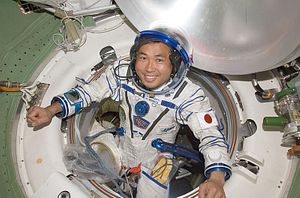Over the weekend, during a small ceremony held some 370 kilometers above the Earth’s surface, command of the International Space Station was passed from Russian cosmonaut Oleg Kotov to JAXA (Japan Aerospace Exploration Agency) astronaut Koichi Wakata.
Wakata, 50, is the first Japanese to lead the orbiting science lab. He will oversee the space station’s six-member crew until mid-May as commander of Expedition 39.
“I am humbled to assume the command of the space station,” Wakata said during the change-of-command ceremony on March 9, which was broadcast by NASA. “I am very proud as a Japanese to be given this important command. I think that this reflects the real trust toward Japan and what Japan has achieved over the past years.”
Expedition 38 commander Kotov departed the ISS with fellow cosmonaut Sergey Ryanzanskiy and NASA astronaut Mike Hopkins yesterday after completing their 166-day mission. The Russians set a record for their country’s longest spacewalk (eight hours and five minutes) and were also the first to bring an Olympic torch into space.
“I am really glad to pass command of the space station to my friend, JAXA astronaut Koichi Wakata,” Kotov said. “Now it is time to learn Japanese language aboard the station, so arigato!”
The trio, who exited the ISS aboard a Russian Soyuz TMA-10M spacecraft, landed safely in Kazakhstan earlier today.
Wakata, a Saitama native, received a Bachelor’s degree in aeronautical engineering, a Master’s degree in applied mechanics and a Doctorate in aerospace engineering each from Kyushu University. Upon graduation in 1989, he worked as a structural engineer for Japan Airlines. He was selected as an astronaut candidate for the National Space Development Agency of Japan (NASDA, now JAXA) in 1992.
Since his first spaceflight in 1996, Wakata has proven himself as a world-class astronaut and an expert on robotics and zero-gravity construction.
“Over the course of his three prior spaceflights, Wakata set records as Japan’s first space shuttle mission specialist, his country’s first astronaut to work on building the space station, and the first Japanese crewmember to complete a long-duration stay on the outpost. To date, he has logged more than 280 days off the planet,” wrote Space.com.
Wakata’s Twitter account went viral last month, after posting stunning pictures taken from his unique perspective on the ISS. In December, Wakata greeted Kirobo – the first humanoid robot in space. Kirobo, which is “programmed to process questions and select words from its vocabulary to construct an answer, instead of giving pre-programmed responses to specific questions,” engaged in small talk with the veteran spaceman.
During his current mission, Wakata has already handled the launch of a small satellite from Japan’s Kibo module, snapped photos of Comet ISON, and conducted numerous scientific experiments.
“Wakata set up a new test inside the Fluid Physics Experiment Facility [that] involves ‘Marangoni convection,’ the flow process caused by the difference of surface tensions of a gas and liquid,” reported IBTimes. “According to NASA, the research can lead to improvements in the production of semiconductors as well as clinical tests such as DNA examinations.”
Three new astronauts will replace the trio that returned to earth today. They are expected to arrive at the ISS on March 25.

































